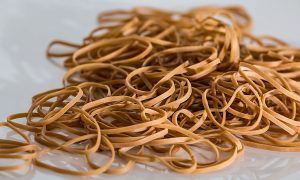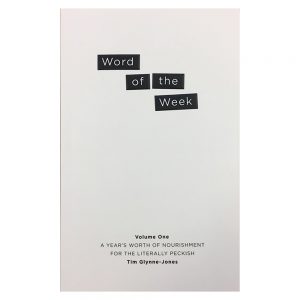
Here’s a story that might have escaped your attention. Back in 2019 a company called Trelleborg Sealing Solutions got together with students at Tewkesbury School to make the world’s longest seamless rubber band. Who said British manufacturing had lost its pioneering spirit?
To cut an unnecessarily long story short, they succeeded, making a giant 250m O-ring that went all the way round Tewkesbury Cathedral and into the Guinness World Records. How they got Tewkesbury Cathedral inside it is not explained. I presume they must have hired a giant cowboy to lasso the cathedral somehow, which is a video I’d love to see, but for some reason there doesn’t appear to be any coverage of this story beyond the Gloucestershire Live website.
It came to my attention because I was looking for an O-ring for my toilet and, as so often happens on Friday mornings, I went down a rabbit hole. There’s a chrome pipe that runs from the cistern to the back of the pan and it has a sort of inverted chrome cup at the top that covers the plastic fitting, making it look nice, as all toilets should. This cup is held up with a rubber O-ring round the pipe. It inevitably perishes and breaks over time, leaving the toilet owner with no choice but to go online in search of a replacement and discover all sorts of stories about rubber bands.
Any old rubber band would have done the job, but you just don’t see them about any more. Time was when you couldn’t walk down your front path without finding dozens of them dropped there by the postman and every schoolkid worth their salt had a growing rubber band ball on the go. These days – nada. I can only assume the Post Office senior management decided they were too high-tech. Either that or they’ve all been scooped up by Sajankumar Arvinbhai Patel, holder of the World Record for the longest rubber band chain by an individual. His chain measured 6,500m and used an estimated 85,300 rubber bands. Surely he could have spared one for my toilet.
I’m sure you’re itching to know the record for the longest rubber band chain by a group. That was achieved by the children of Gettysburg Elementary School in Clovis, California, and measured an astonishing 19 miles long. Weirdly, Guinness World Records doesn’t state whether that was stretched or unstretched – a crucial detail for this category, I would have thought. I assume it was unstretched, as the risk involved in getting elementary schoolchildren to stretch out a 19 mile rubber band are too terrible to contemplate. They could have been pinged to all points of the Pacific.
When rubber first bounced into Britain in the 1700s, it was known as ‘caoutchouc’, an onomatopoeic French word taken from the sound you make if you swallow it by mistake. It became known as ‘rubber’ because of its effectiveness at rubbing things out. That’s the truth. Before anyone discovered that you could use it to make raincoats or car tyres or O-rings for toilets and Tewkesbury Cathedral, or to catapult children into the Pacific Ocean, we used it almost exclusively to make rubbers (or ‘erasers’ for any Americans out there).
The rubber band was invented in the 1800s by godfather of the English rubber industry, Thomas Hancock, who, not having a chrome toilet nor living near Tewkesbury, couldn’t see a use for it and left it to his contemporary Stephen Perry to secure the patent. Hancock’s rubber bands were brittle and unreliable, but Perry made them with vulcanised rubber (heated with sulphur) and hit the jackpot. From the back of the classroom. With a paper pellet.
Today, the world’s biggest rubber band producer is the Alliance Rubber Company of Arkansas, which turns out so many that it quantifies them by weight rather than number (6,800,000kg a year at the last count). If you joined them all together it would go on and on and on with apparently no useful purpose whatsoever. Remind you of anything?


